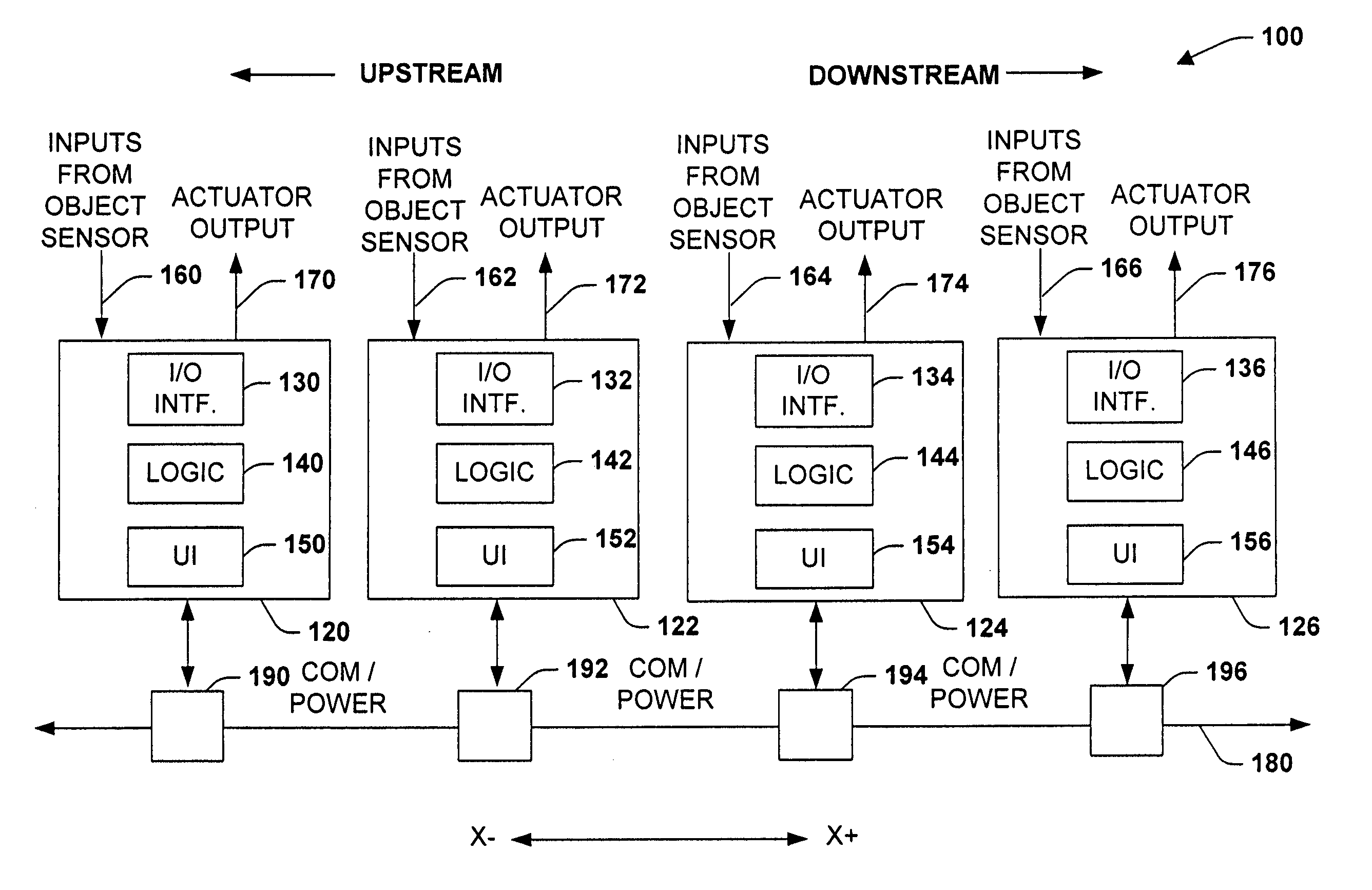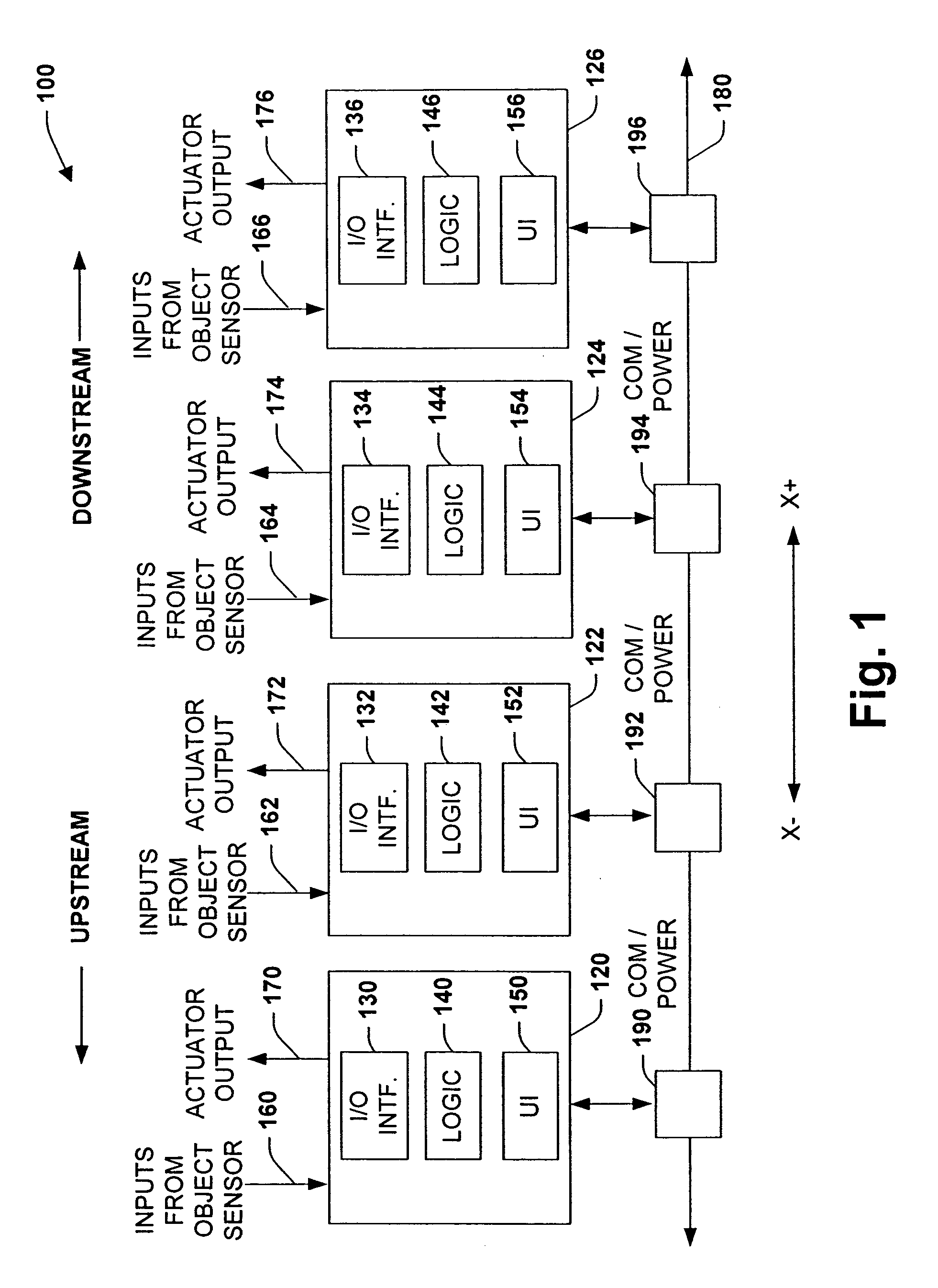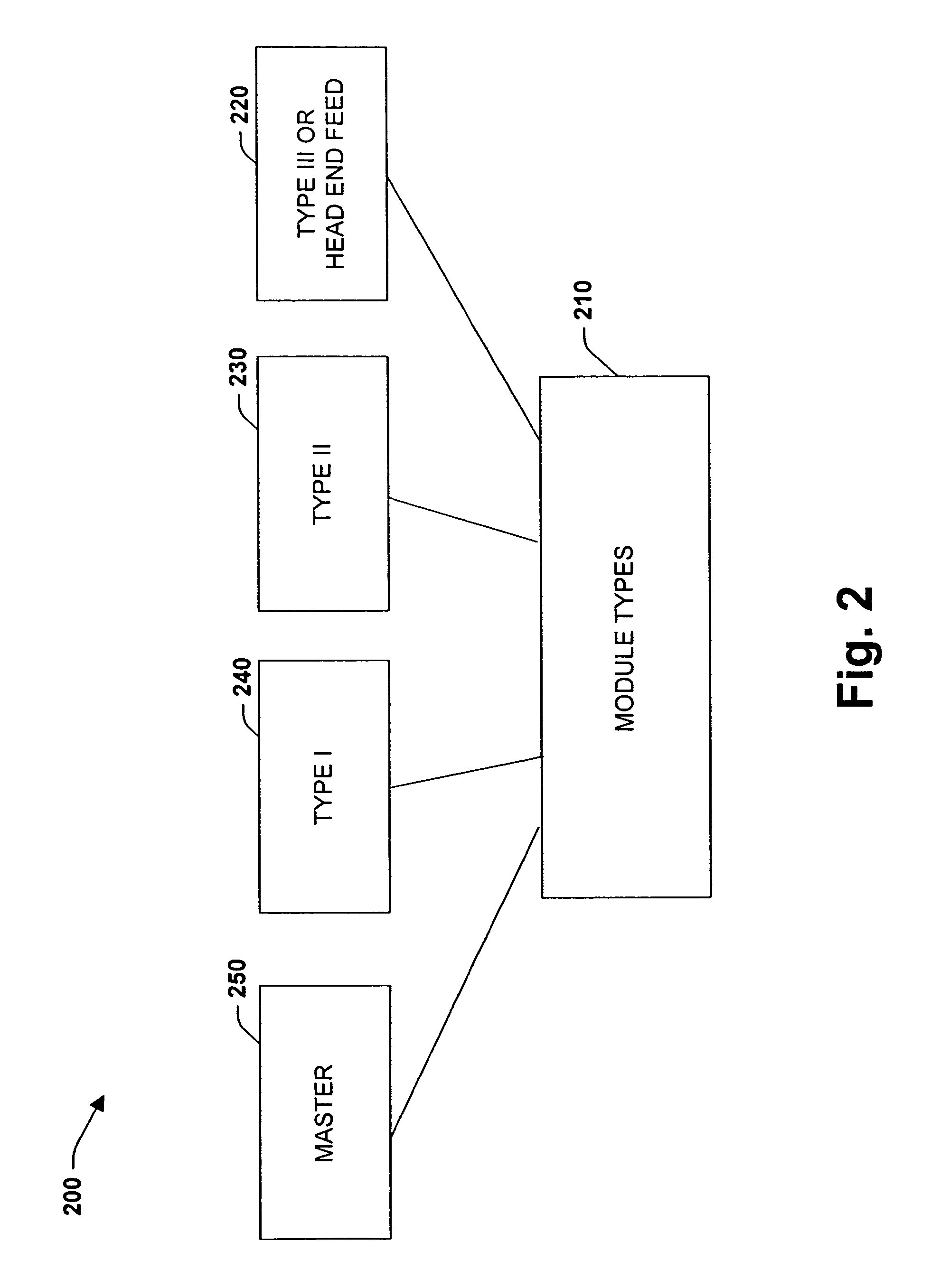System and methodology providing coordinated and modular conveyor zone control
a conveyor and modular technology, applied in the direction of coupling device connection, contact member penetrating/cutting insulation/cable strand, instruments, etc., can solve the problems of speed and smoothness during conveyor operation, limited conveyor speed, and many problems with conventional distributed zone control systems, so as to facilitate rapid module installation and configuration, facilitate efficient and robust control of zone conveyer sections, and reduce cable and installation costs
- Summary
- Abstract
- Description
- Claims
- Application Information
AI Technical Summary
Benefits of technology
Problems solved by technology
Method used
Image
Examples
Embodiment Construction
[0042]The present invention relates to conveyor control system(s) and / or method(s), which may be operatively coupled with other such systems in order to implement a control strategy for a modular conveyor system. A module and / or series of modules are provided that clamp to a cable (e.g., flat four-conductor cable, and / or bridge to other media than cable), the modules having associated logic and inter-module communications for control. This includes relatively inexpensive power distribution, interconnection (such as for example to photoelectric sensors and actuators such as air valves or motor controllers) and motion logic for industrial conveyor systems.
[0043]Referring initially to FIG. 1, a multi-zone conveyor system 100 is illustrated in accordance with an aspect of the present invention. The system 100 generally includes a plurality of zone modules 120-126 that cooperate to control associated conveyor sections (not shown). This can include Y upstream zone modules (Y being an inte...
PUM
 Login to View More
Login to View More Abstract
Description
Claims
Application Information
 Login to View More
Login to View More - R&D
- Intellectual Property
- Life Sciences
- Materials
- Tech Scout
- Unparalleled Data Quality
- Higher Quality Content
- 60% Fewer Hallucinations
Browse by: Latest US Patents, China's latest patents, Technical Efficacy Thesaurus, Application Domain, Technology Topic, Popular Technical Reports.
© 2025 PatSnap. All rights reserved.Legal|Privacy policy|Modern Slavery Act Transparency Statement|Sitemap|About US| Contact US: help@patsnap.com



